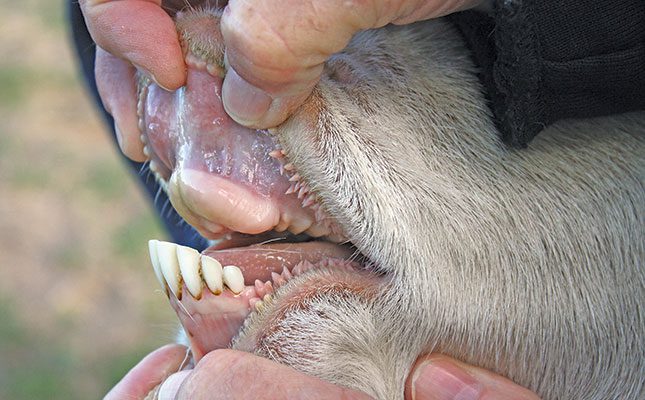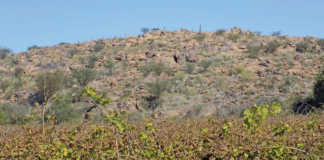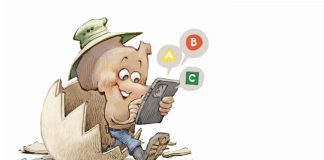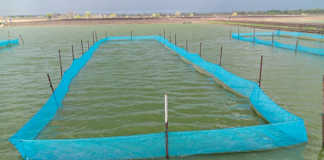
Photo: Wikimedia Commons
The ‘X to Y teeth’ element of the value chain is where the critical and ‘profitable’ physical growth of a sheep occurs, with the animal moving from being a lamb (up to 12 months) to a yearling or juvenile (12 to 20 months), and then to a mature sheep at around 48 months.
Up until this point, the farmer has had to carry all the costs associated with raising the animal. Most farmers prefer to use the eruption of the animal’s teeth as an indication of its approximate age. The following guidelines are used:
- At age 12 to 18 months, the milk teeth begin to fall out and are replaced by two permanent front incisors;
- At about 24 months, two or more large front teeth appear, one on each side of the yearling teeth;
- By 48 months (four years) of age, the sheep should have six permanent teeth;
- By 60 months (five years), the animal should have a complete set of eight permanent front teeth. The sheep is now referred to as ‘full mouth’ (volbek). Adult sheep also have 24 back molars for chewing or grinding, six on each side of the upper and lower jaws;
- After five or six years, the age of a sheep is judged by the amount of wear on its front teeth.
The health of the animal’s dentition has a direct bearing on its ability to graze and to prepare the grass and other vegetation for digestion, the objective being the conversion of the majority of its nutrition into either body weight, in the form of meat and fat, or a fleece (vag) of high-quality wool. Body weight is the correlating metric used together with number of teeth to approximate age, but these correlations differ from breed to breed.
As there are many hundreds of listed breeds of sheep, each with its own ‘breed standards’ of age/weight, body form, wool type and so on, the number of teeth is an easier metric to use in determining age. For example, the ‘breed standard’ for a ‘two-tooth’ Dorper ewe is 70,9kg, whereas the Afrino standard for an animal of the same age is 52,9kg.
As a key dynamic in the growth of the sheep to a fully contributing production unit, the time-to-cost ratio for the achievement of the best body weight at the appropriate age is a critical management metric.
The development of robust dentition underpins this achievement, with the premature loss of incisor teeth in sheep being an absolute calamity for a sheep farmer, since affected animals are unable to graze on short or rough pasture, leading to malnutrition, poor production and weight loss.
A further important point worth noting, yet often overlooked, is that all synthetic ‘medicines’ will leach key minerals and other trace elements from the sheep’s body. If these are not replaced, imbalances, deficiencies, impairments and disease will result, with a direct impact on dentition and dental health.
Consider the relationship between bone density, the development of healthy teeth, and the correct balance of minerals such as calcium and magnesium.
My risk mitigation overlay develops the multi-dimensional view of the risk by considering four aspects:
- Description of the risk;
- Possible cause of risk issue;
- Risk mitigation;
- Innovation and/or resolution.
Description of the risk
Dental impairment results in the poor physical development of the animal and increased costs of rearing it to maturity due to veterinary and associated costs.
Higher management costs and loss of time and opportunity lead to greatly reduced profitability for the affected animal within the value chain of operations, production and time.
Possible causes of the risk to ovine dentition
Environmental damage to dentition can be caused while sheep are loaded onto or unloaded from livestock transporters or while they are in transit. Animals can be impaired by farm infrastructure, flock members or other farm animals, and they can be harmed when taking in coarse sand or small stones with grass while grazing. Damage can also be caused by objects in camps, such as salt licks.
Mineral and trace element deficiencies can occur if the milk of lactating ewes is deficient in key minerals, electrolytes, vitamins and trace elements. It is guaranteed that the lamb will suffer consequences if it is weaned too early or too late; imbalances in nutrition levels and development will occur.
Organic and systemic pathologies are serious consequences of this range of deficiencies, for example, poor gut absorption among lambs and yearlings, and challenges to the healthy eruption and development of teeth in juvenile animals.
Toxins in water and/or grazing will have adverse effects on the development of robust dentition, as well as negative effects on overall animal health. These toxins include fluoride, chlorine and other pollutants in drinking water, together with pesticides, herbicides, and synthetic fertilisers in grazing.
Dental health might not have been verified during ram selection, or poor dentition and other dental-related challenges could be evidence of inferior genetic lines or the sustained lack of genetic diversity in the breeding flock.
Infection and disease can cause overall poor dental health and development. Sheep can be affected by poor hygiene standards on the farm, for example bacterial infections.
More challenging are unidentified carriers of disease. In this case, patience and repeated observations and testing of potential carriers need to be carried out.
If causative factors have been identified, yet problems persist, it is worthwhile checking the diagnoses, prescriptions and administration of veterinary interventions. Most often, compromised immunity together with poor diet and/or insufficient nutrition will be found as the root cause of most health challenges, and consequently it would be worthwhile to check the quality and value of your grazing.
There are cases where poor dental development and/or loss of teeth has been caused by physical and environmental stress, for example the late rejection of the lamb by the ewe, aggressive behaviour within the flock between members, stress caused by predators, dramatic changes in weather conditions, careless or rough handling while in transit, and even noise levels.
Risk mitigation
Manage by walking about. As a farmer, your physical and cognitive presence among the sheep promotes and reinforces appropriate action. Study and read on ovine dentition and common problems.
Improve your understanding of the role played by minerals and vitamins in ovine dental health and supplements needed.
Analyse your current grazing vegetation, soil and water to establish mineral deficiencies in the farm’s production value chain. It might be a good idea to drink the water yourself. Have a blood analysis done of a statistical sample of your flock to establish prevalent levels of critical trace elements, vitamins and so on.
Verify the quality of dental development and health of your sire rams. Over an extended period, observe the behaviour and interactions of flock members. Understand what to look for in terms of deviant, disruptive, aggressive or abnormal behaviour.
Ensure that current dosages and quality of supplements and supplemental feeds given to the sheep are in fact accurate for the breed and age of the sheep, season (time) of the year, condition of the veld, and other stress factors. Also check the expiry dates of supplements being administered.
Inspect grazing camps for the intrusion of competitors or wild herbivores, for example antelope species, as these will reduce the volume and quality of grazing and water available for the sheep. Also look out for objects on which your sheep might damage or break their teeth. Check and maintain fencing in grazing areas.
Innovation and/or resolution
In the case of ovine dentition, prevention is better than cure. It is often strategically worthwhile in the long term to remove and cull sheep showing evidence of genetically linked challenges with dentition development and/or health.
When it comes to cases of damage to teeth caused by environmental factors, resolution of the risks must be based on a return to basics, and greater management and attention, especially management by walking about. Daily physical observation of the flock, their behaviour and the grazing camp is important.
Harnessing the power of science and technology will offer a greater degree of confidence when implementing corrective nutrition protocols, specifically when dealing with minerals, salts, vitamins and trace elements. Analysis of grazing vegetation, water and even blood samples will go a long way to pinpointing an accurate starting point of risk mitigation interventions.
The value of database management will be addressed in a later article in this series. Bear in mind that there is no silver bullet or short cut to the resolution of risks related to ovine dentition.
Conclusion
As with humans, so with sheep: “We are what we eat and drink.” Clearly, if a sheep cannot eat, chew and digest efficiently, it will never amount to much.
An understanding of ovine dentition and development is a key issue for a sheep farmer, considering that so much of what he or she is working towards achieving depends on the animal’s ability to convert grazing into body weight and/or a high-quality fleece.
As evidence of the value of knowledge about ovine dentition, I would encourage you to review the correlation between a sheep’s dentition and the grading of its carcass. A basic working knowledge of ovine dental physics and the role played by the chemistry of key minerals, salts, vitamins and trace elements cannot be considered as peripheral or optional.
Email PJ Mommsen at [email protected].










